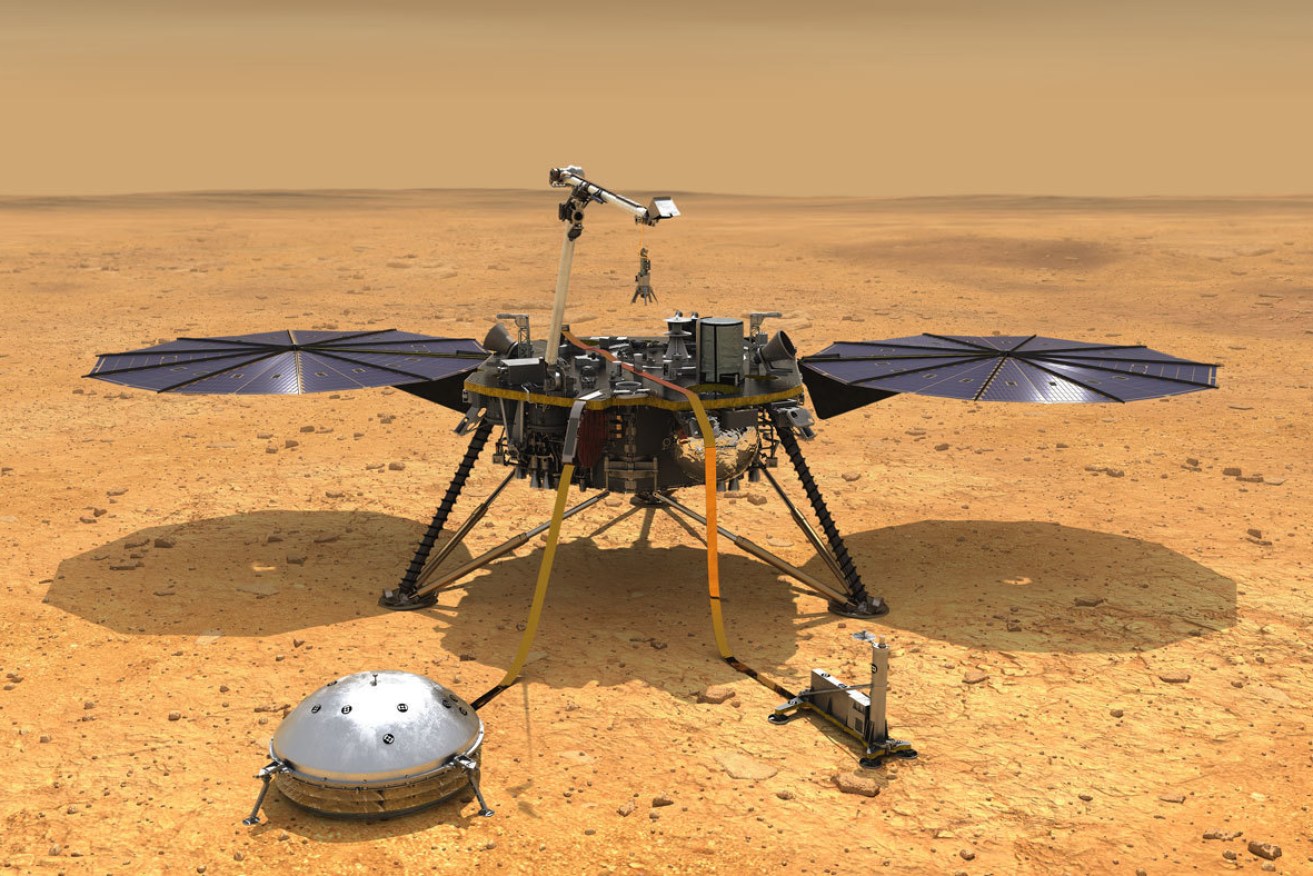Scientists use ‘marsquakes’ to shake loose Red Planet’s secrets
Australian scientists have figured out how to look inside planets in the solar system to learn more about how they evolved.

The experiments demonstrate the feasibility of using single-station seismic observations, and similar procedures could be performed for other planets and moons, according to the ANU paper. (Image: NASA)
The Australian National University researchers have determined the core of the planet Mars is about 3620 kilometres in diameter, which is large but slightly smaller than Earth’s core.
Lead author Dr Sheng Wang and co-author Professor Hrvoje Tkalčić used data from a seismometer attached to NASA’s Mars lander and have published the findings in the scientific Nature Astronomy journal.
Using a single instrument to scan the interior of a planet had never been done before.
The experiments demonstrate the feasibility of using single-station seismic observations, and similar procedures could be performed for other planets and moons, according to the paper.
Although the seismicity – how often quakes occur – is much higher on Earth, numerous “marsquakes” and “moonquakes” due to tectonics, tidal forces and volcanism make it possible, they say.
Tkalčić said signals can survive hours after they are emitted from quakes, meteoroid impacts and other sources, and revealed the presence of a large core in the Red Planet’s heart.
The scanning works in a similar way to an ultrasound that uses sound waves to generate images of a human body, as seismic waves give off signals or echoes that pierce through and bounce off the Martian core.
“We can determine how far these seismic waves travel to reach the Martian core but also the speed at which they travel through Mars’ interior. This data helps us make estimations about the size of Mars’ core,” Tkalčić said.
Confirming the existence of a core, known as the “engine room” of planets, can shed light on a planet’s past and evolution – including when a magnetic field formed or ceased to exist.
“A magnetic field is important because it shields us from cosmic radiation, which is why life on Earth is possible,” Wang said.
He said the method could be used to analyse Jupiter’s moons and outer solar system planets.
Getting success with less equipment is also cheaper, which matters to space budgets.
“There is a single seismic station on Mars. There were four of them on the Moon in 1970s,” Wang said.
“Having a limited number of instruments is unlikely to change in the coming decades or even this century due to high cost.”












